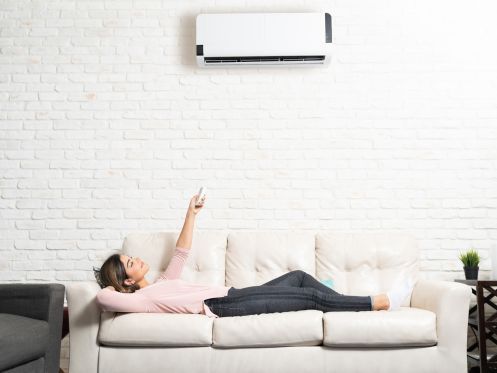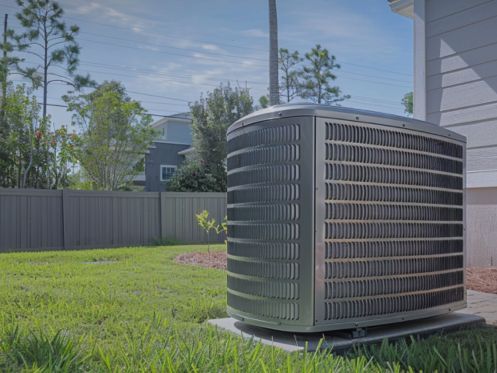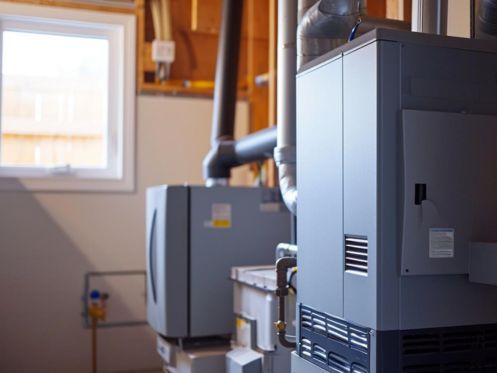Using Surge Protectors to Keep Your Electronics in a Thunderstorm

Table of Contents
Most commonly, homeowners are occupied with their homes’ safety during heavy winds and damage caused by water but tend to neglect the perils that lightning brings. A thunderstorm can cause severe damage (often irreparable) to the electronic devices in the home, including TVs, laptops, coffee makers, printers, and many more.
Even if the house isn’t directly struck by lightning, the dangers are still eminent and can drain your budget by thousands of dollars. When lightning strikes a power line supplying a home with electricity, the possibility of a surge is highly probable.
This means even the most careful homeowners may be unable to prevent lightning-caused power surges. However, there’s a beacon of light in the eye of the storm, and it is called a surge protector.
Stay with us as we walk you through using surge protectors to keep your electronics safe during thunderstorms.
Surge Protector: Function and Use
Essentially, surge protectors are devices that help protect your electronics from power surges. Power surges are sudden increases in voltage in your electrical system. Surge protectors are designed to absorb the extra voltage and reroute it away from your electronics. In short, surge protectors are used for electronics protection and are an essential tool for safeguarding all your devices from power surges.
A surge protector looks like a regular outlet strip but with the added protection of a circuit that diverts any extra voltage away from your devices. The extra voltage can appear for a variety of reasons. For example, when you turn on or off large appliances, such as an air conditioner, or when lightning strikes near your home, it can trigger a power surge in your electrical system. Surge protectors keep this extra voltage from reaching your devices, keeping them safe.
Surges are standardly measured in microseconds, and even though a microsecond is an incredibly short amount of time, these pulses can wreak havoc on sensitive electronic components. And it doesn’t even have to be a direct lightning strike to cause this damage – the spike can come from simply being in the vicinity of a lightning strike. These transients can peak at thousands of volts and permanently damage your devices if they aren’t protected by a surge protector.
Dangers of Power Surges
Typically, most home appliances are good for handling up to 120 volts of power. But, when a power surge happens, the voltage can spike and range anywhere from 0 to 169 volts. If a fluctuation in the voltage isn’t controlled and contained, it can cause serious damage in the form of appliances melting and fires.
Preparing Home Devices for Severe Weather
If you live in an area that sees a lot of unstable weather conditions, often severe, it’s a good idea to know how to make your home safe and do all you can to ensure thunderstorm safety.
There are three essential considerations to bear in mind, including:
- Unplug all electrical devices: To keep your devices safe from power surges caused by lightning, the best thing you can do is immediately unplug all electronic devices as soon as you notice thunderstorms approaching. Remove all devices from the circuit: unplug your TVs, computers, appliances, and other devices connected to a power outlet.
- Install surge protectors: Often, lightning strikes at the most inconvenient times or when people are away from their homes and can’t act to safeguard electronic devices. In such a scenario, a point-of-use surge protector can help. These protectors are installed directly into an outlet, allowing excess electricity to flow into the ground. By installing surge protectors, residents can ensure that their plugged-in devices are safe, even when they’re not at home.
- Install a lightning protection system for the entire house: If you’re looking for the best way to protect your home from electrical surges, consider having a team of professionals install a service-entrance surge protector. This is a device that’s installed between your home’s electric meter and its main electrical service panel. With this system in place, any electrical surges will be diverted before they can enter your home, keeping all of your electrical devices safe and sound.
Power Levels and Surge Protectors: Finding the Best Protection
Depending on the might of the surge, purchasing a surge protector with a rating of a minimum of 200 J to 400 J is a great option for basic surge protection. However, if you suspect the surge could be more severe, it’s best to opt for more powerful surge protectors with a rating of 600 joules or higher.
What Is a Good Surge Suppressor?
If you’re looking to protect expensive electronics, such as cellphones and laptops, you’ll want to find a surge protector that has a minimum rating of 1,000 – 2,000 J. That should be enough to cover small appliances and power tools as well. However, if you have larger appliances or heavy-duty power tools, it’s a good idea to look for a surge protector with a higher rating.
How to Prevent a Power Surge
One common cause for a power surge is when high-powered appliances like AC units or refrigerators are switched on. These appliances require a large amount of power to start up, which can cause a spike in the electric current. So, make sure valuable electronics are unplugged when starting home appliances that consume a lot of electricity.
Power surges can also be caused by a malfunction in your home’s wiring, so regular check-ups by a licensed team of electricians are recommended.
The Wrap-Up: Using Surge Protectors to Keep Electronics Safe
Surge protectors, or surge suppressors, are designed to suppress the surge of power coming into electronic devices and electric appliances during a thunderstorm. For a basic level of protection, surge protectors ranked 200 – 400 J are a great option.Do your home a favor and reach out to Air Docs for premium heating and cooling services. Their team of professionals is certified and insured to tackle even the most struggling installation issues, including surge protectors.
Other Blogs You May Be Interested In
Categories














Leave a Reply